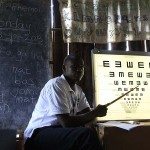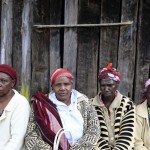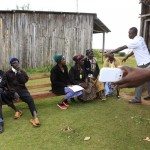A team of eye-car professionals has developed technology that turns an Android smartphone into a portable, low-cost eye examination kit for use in remote areas of the developing world. Its designers say the device will help diagnose eye problems for thousands of people throughout rural Africa and India who are unable or unwilling to travel to urban centres to be tested.
The phone’s camera flash light illuminates her retina allowing the tester to check for cataracts, glaucoma and other diseases. High-definition photographs of her eye are then e-mailed to London’s Moorfields Eye Hospital for further analysis.
The Portable Eye Examination Kit – Peek for short – is the brainchild of a team, which includes Doctor Andrew Bastawrous. The team is conducting a trial across rural Kenya, trying to find and treat hard-to-reach patients.
“They are very difficult to find, they are very difficult to take and train personnel or expensive equipment to, and they are reluctant to come to main cities and hospitals to seek treatment, either because of barriers, such as cost or fear, and so developing an app on the phone allows the healthcare worker to get to the patient,” said Dr Bastawrous.
The team says diagnosis using phone images of patients’ eyes compare favourably with that made by conventional, clinic-based equipment.
Letters appearing on the screen act as a basic vision test chart.
In addition, the phone can store patients’ records, and for follow-up visits, their location is tracked by its GPS.
At the trial’s midway point, a thousand patients have received treatment, including John Kipkemoi.
“I just heard about this program and I decided to come over and get my eyes checked. This is basically why I am here today,” says Ambusket resident, John Kipkemoi
The World Health Organization says 280 million people world-wide are visually impaired, 39 million of them blind…..and many unnecessarily so, says Bastawrous:
“Eighty percent of eye diseases that cause blindness could be avoided and majority of those people who are blind live in low income countries such as Kenya, that is 90 percent…..the problem is usually getting the patient to the surgeon to do the operation. So where do they live, how do we find them, those are the challenges. So developing an app like this can connect those two.”
Bastawrous says eye doctors in Africa and northern India currently operate at less than 40 percent of their capacity. He believes that by helping track down remote patients, Peek could vastly reduce rates of avoidable blindness among the rural poor.













